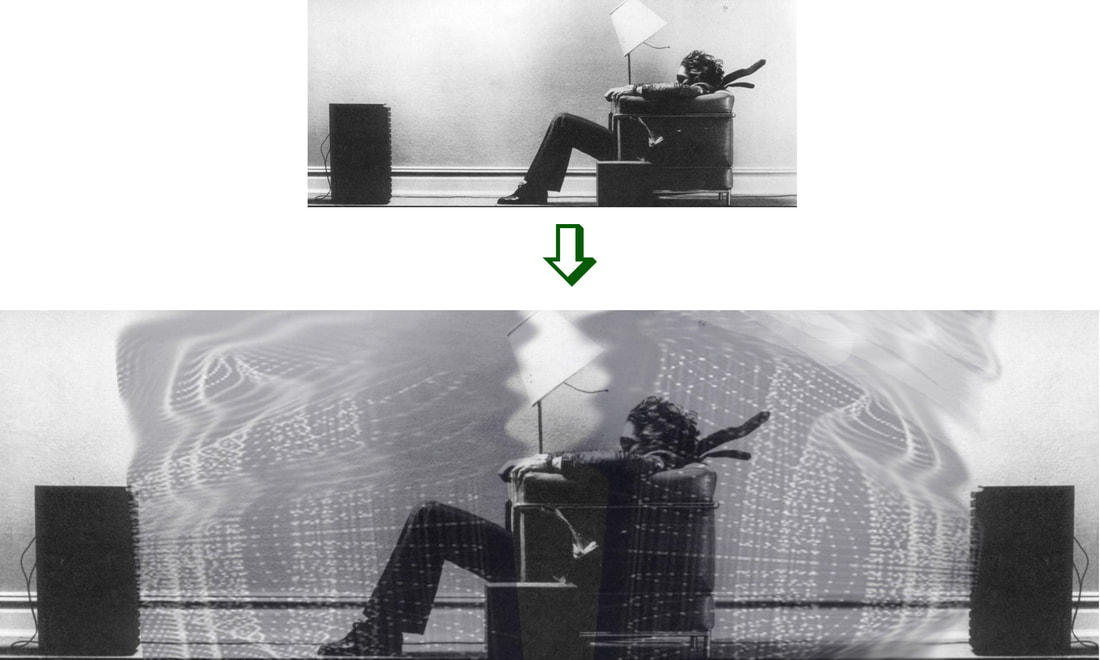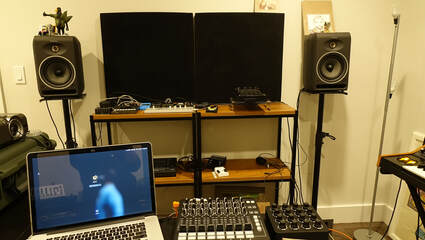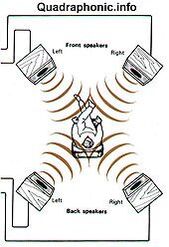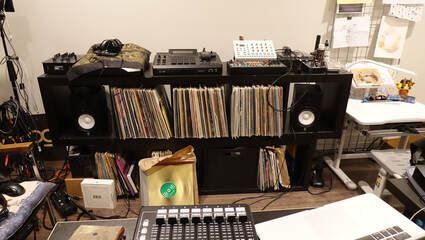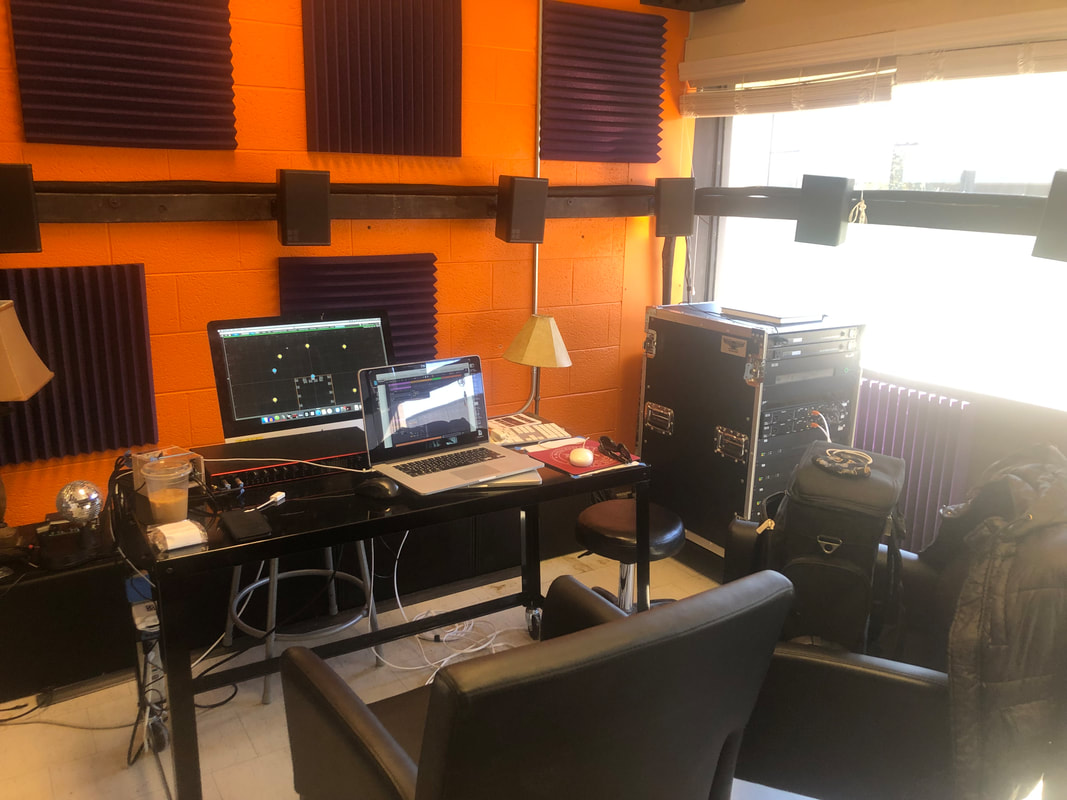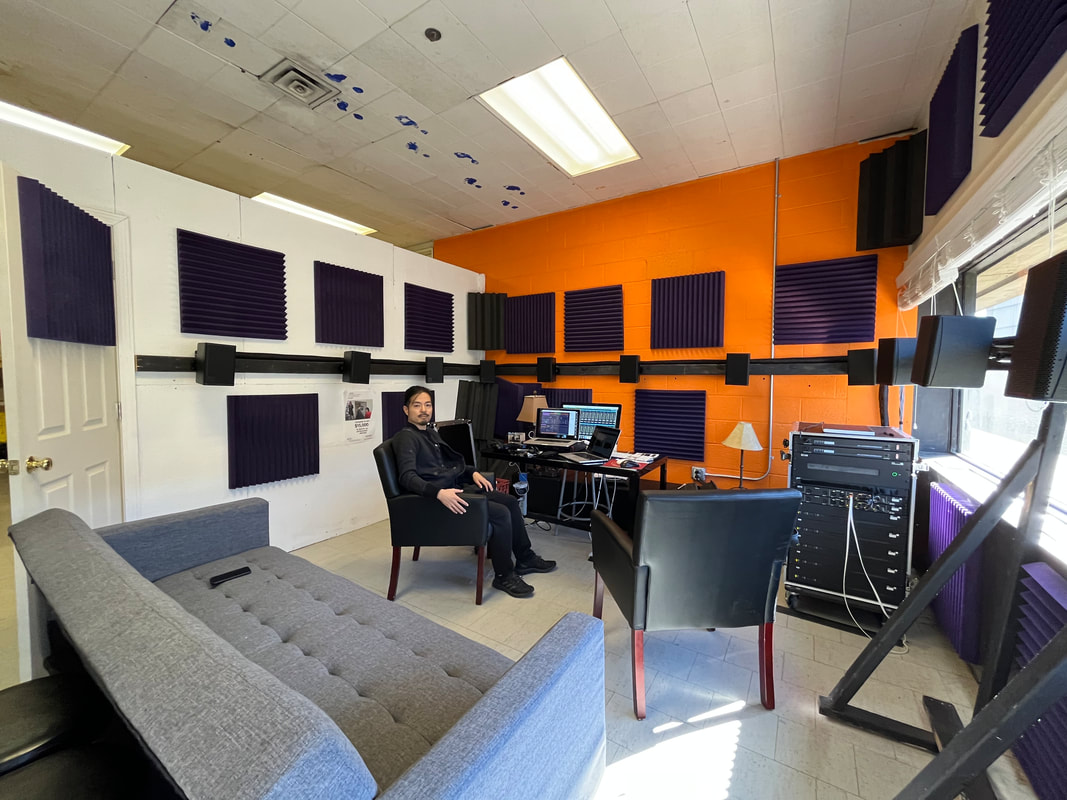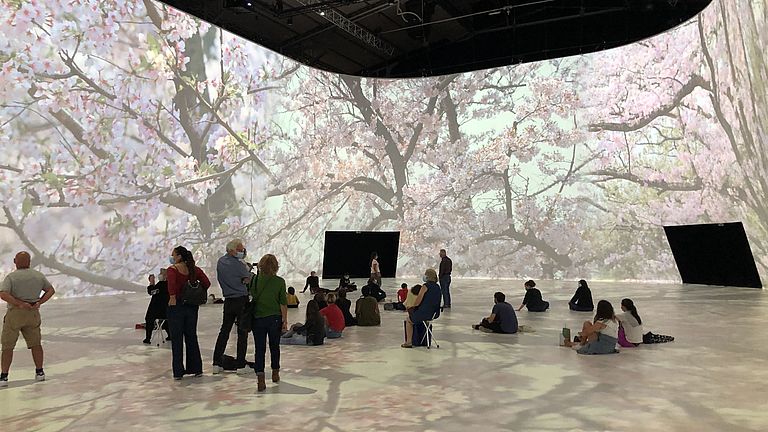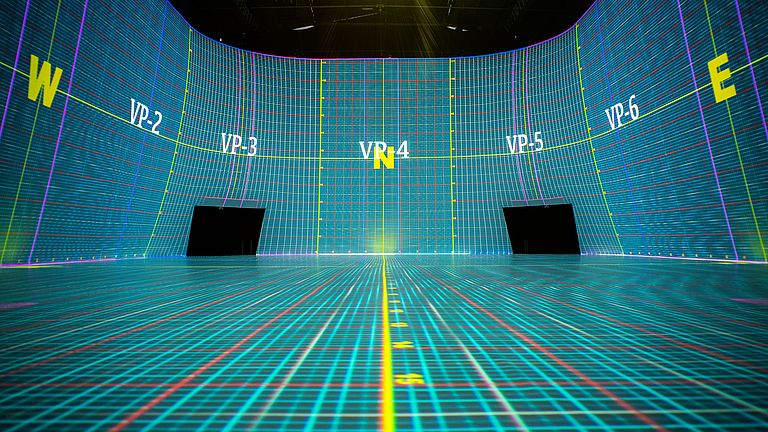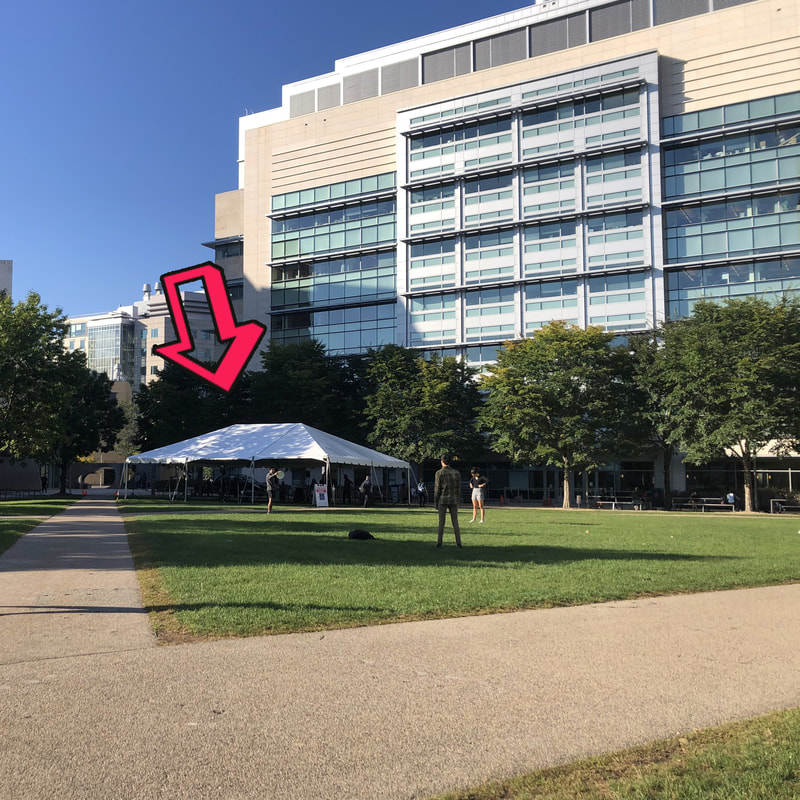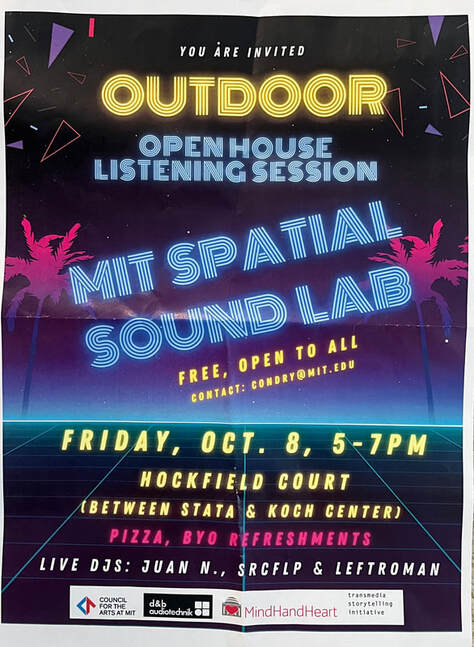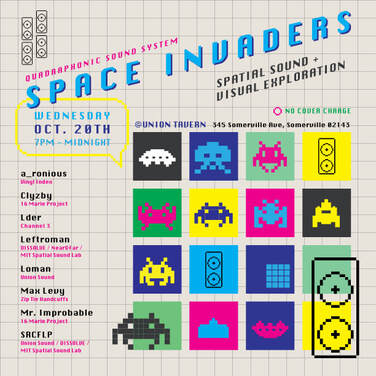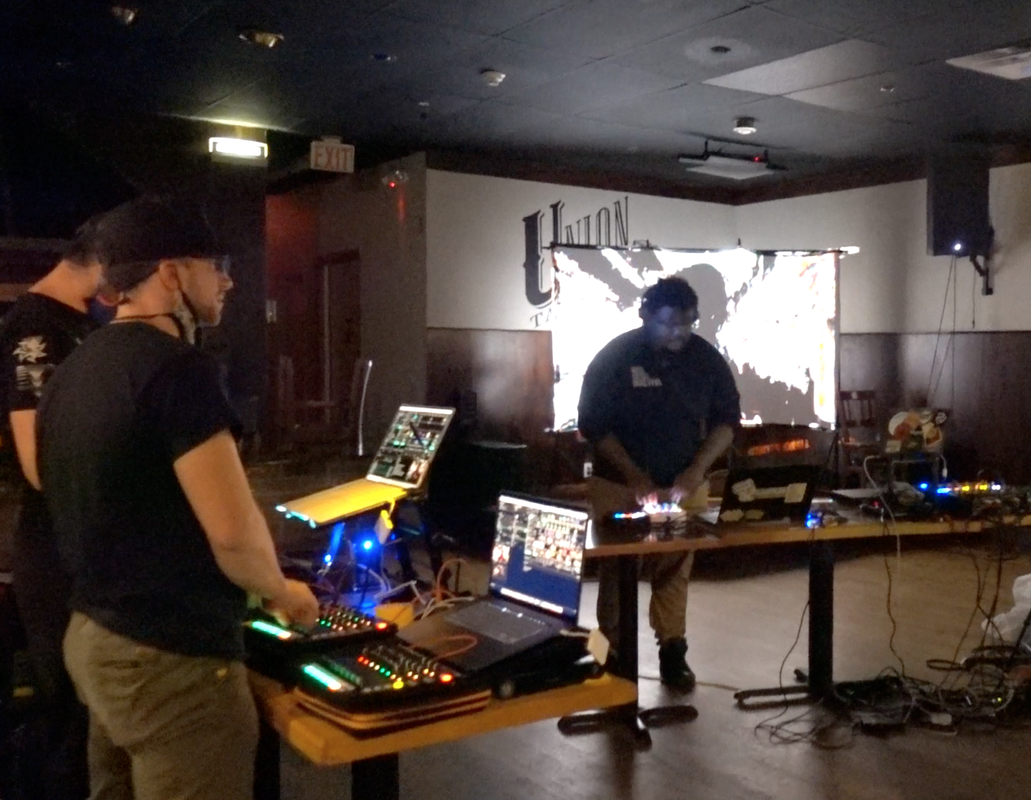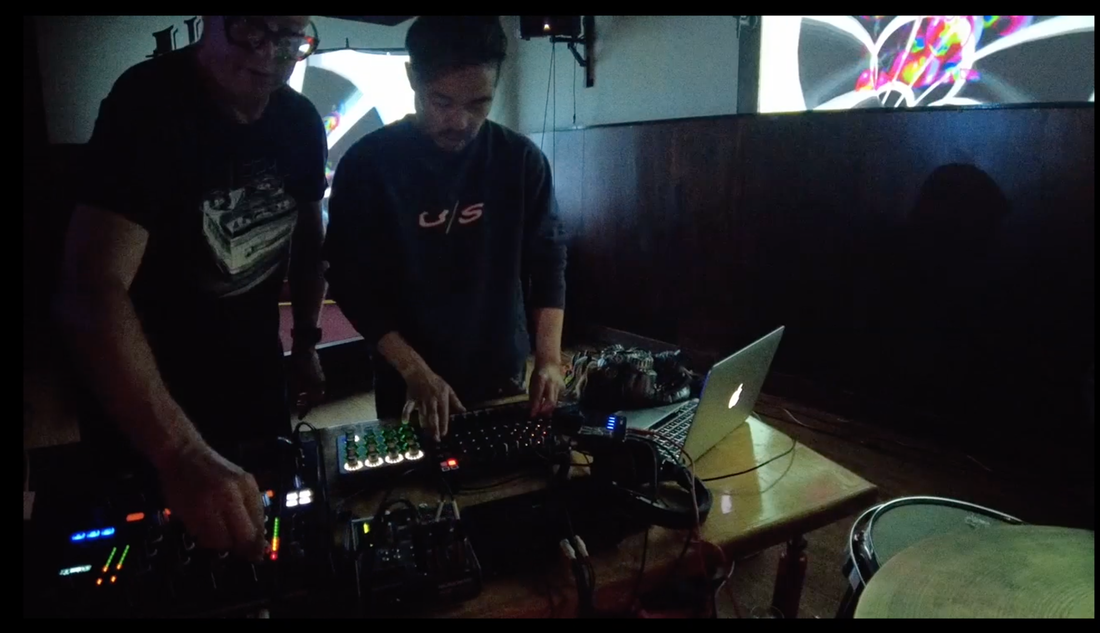Spatial sound is an open category that emphasizes multiperspective, multidirectional, spatially sensitive listening.
Spatial audio describes a variety of sound playback technologies. There are "object-based" formats in which the location of a sound is baked into the position of the thing that emits the sound i.e. d&b Soundscape (our current research equipment and sound system at the lab). There's also "Ambisonics" that provides a sphere of sound centered around the listener, i.e. Envelop4Live. And there are spatial virtualizers, technologies that project sound into a virtual acoustic space, i.e. Wave NX.
The acoustic principles that make perceiving spatial audio possible over a pair of earbuds also apply to technologies that produce spatial audio from two or more speakers i.e. Binaural.
Earbuds and headphones have acoustically isolated speakers. The Spatial sound we refer to at the lab is the immersive audio production outside of headphones or earbuds, hence the "space" in spatial. What gets me most excited about researching and exploring spatial sound is its potential to enhance communal and social experiences through this technology.
Spatial audio describes a variety of sound playback technologies. There are "object-based" formats in which the location of a sound is baked into the position of the thing that emits the sound i.e. d&b Soundscape (our current research equipment and sound system at the lab). There's also "Ambisonics" that provides a sphere of sound centered around the listener, i.e. Envelop4Live. And there are spatial virtualizers, technologies that project sound into a virtual acoustic space, i.e. Wave NX.
The acoustic principles that make perceiving spatial audio possible over a pair of earbuds also apply to technologies that produce spatial audio from two or more speakers i.e. Binaural.
Earbuds and headphones have acoustically isolated speakers. The Spatial sound we refer to at the lab is the immersive audio production outside of headphones or earbuds, hence the "space" in spatial. What gets me most excited about researching and exploring spatial sound is its potential to enhance communal and social experiences through this technology.
im·mer·sive/iˌmərsiv/ adjective
: providing, involving, or characterized by deep absorption or immersion in something (such as an activity or a real or artificial environment)
: providing, involving, or characterized by deep absorption or immersion in something (such as an activity or a real or artificial environment)
Quadraphonic spatial sound can be set up as simply as having an audio interface with 4 audio outputs plugged into 4 speakers, and routing 4 separate audio information to them.
I am a researcher at the MIT Spatial Sound Laboratory, working on spatial sounds and immersive audio with Professor Ian Condry. He founded the lab based on his research and the idea that "innovation occurs when creative people have spaces to share, interact, provide feedback, and work through new ideas, building audiences and networks." We have been working together on the d&b Soundscape, a 360-degree, object-oriented spatial sound mixing technology, and its applications for performance venues. I am eager to research further its use in interactive art, new forms of entertainment, new ways to experience sounds, and its application for well-being and therapy.
Researching object-oriented spatial sound mixing technology for inter-media art and live performances.
The MIT Spatial Sound Lab experiments with music, sound art, sensory ethnography, data sonification, disability studies, field recordings and more. We share an interest in experimenting with sound in ways that dissolve contemporary hierarchies of unidirectional communication: the stage, the screen, the earbud stream.
Working on sound placement and movement via Ableton automation; Ableton could then transmit control data live to Soundscape.
It is liberating to free the sounds from the restrictions of a traditional L-R live mix.
I think it's a new and exciting way to pull the audience into the performance!
It is liberating to free the sounds from the restrictions of a traditional L-R live mix.
I think it's a new and exciting way to pull the audience into the performance!
Currently researching and developing; spatialized audio is crucial for immersive experience with visual accompaniment [image: dbaudio-application]
“Spatial sound” is an open category that emphasizes multiperspective, multidirectional, spatially sensitive listening.
SPACE INVADERS
Proven successful at the previous Somerville Museum event, we deployed the quadraphonic setup. This time I connected a performance system I have been developing, the Dynamic Performer System (DPS). In its third iteration, this system version 3.0 has been the platform for refining my approach to interface design regarding performance improvisation.
The event was at Union Tavern/Bow Market, one of the various AR outdoor gallery locations, which happens to be where my wife and I run our retail business, Crane & Turtle, a Japanese artisanal crafts & goods shop.
The event was at Union Tavern/Bow Market, one of the various AR outdoor gallery locations, which happens to be where my wife and I run our retail business, Crane & Turtle, a Japanese artisanal crafts & goods shop.
|
Setting up DPS-3 and visual projection system
|
Performing on the quadraphonic sound system, combined with live drumming
|
